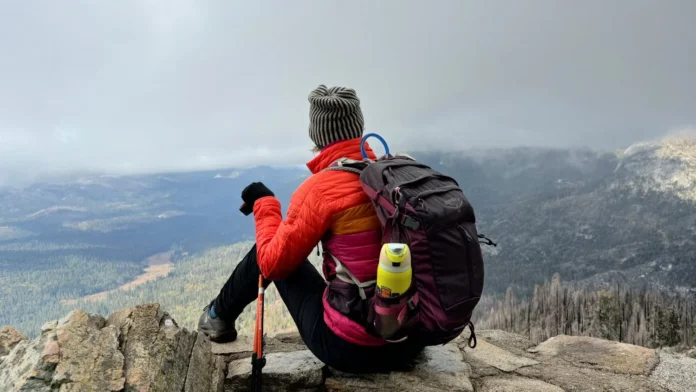Hiking brings freedom, but it also demands preparation. A trail that looks calm at the start can turn rough with weather shifts, rocky climbs, or unexpected detours.
The gear you pack is what turns those challenges into manageable moments rather than emergencies.
The intent of this guide is straightforward: here are the hiking essentials that every adventurer should have in their backpack – explained in a way that shows why they matter, not just what they are.
Quick Essentials Table
| Gear Item | Why It’s Essential | Example / Tip |
| Backpack | Organizes and carries everything comfortably | Choose size based on trip length |
| Navigation tools | Keeps you on track if trails vanish | Map + compass + GPS |
| Mini first aid kit | Handles blisters, cuts, stings, and more | Customize for your needs |
| Water & purification | Prevents dehydration and illness | Bladder + filter/tablets |
| Layered clothing | Adapts to weather changes quickly | Wool/synthetics over cotton |
| Footwear | Protects feet, prevents blisters, improves stability | Break in before long hikes |
| Food & snacks | Provides energy and morale on the trail | Nuts, jerky, dehydrated meals |
| Light source | Essential after dark, frees your hands | Headlamp with spare batteries |
| Multi-tool & fire gear | Fixes, cuts, or creates heat in emergencies | Pack lighter + waterproof matches |
| Shelter & rain cover | Shields from sudden storms or cold nights | Tarp, bivy sack, backpack cover |
1. The Right Practical Backpack
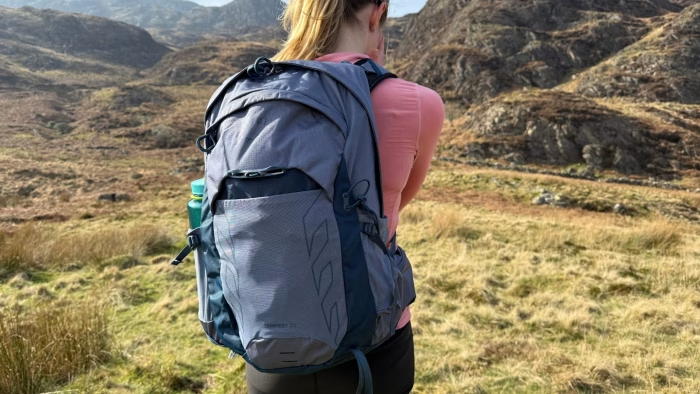
Think of your backpack as the framework of your hike. Everything else depends on it. A short three-hour forest loop might only require a 20-liter pack, but if you are heading into alpine terrain for two or three days, you will want something closer to 50 liters.
Comfort is key: wide shoulder straps, a padded hip belt, and a ventilated back panel prevent sore muscles and chafing. A poor-fitting pack doesn’t just slow you down; it can sap your energy before you even reach the good views.
2. Navigation: Staying on the Path
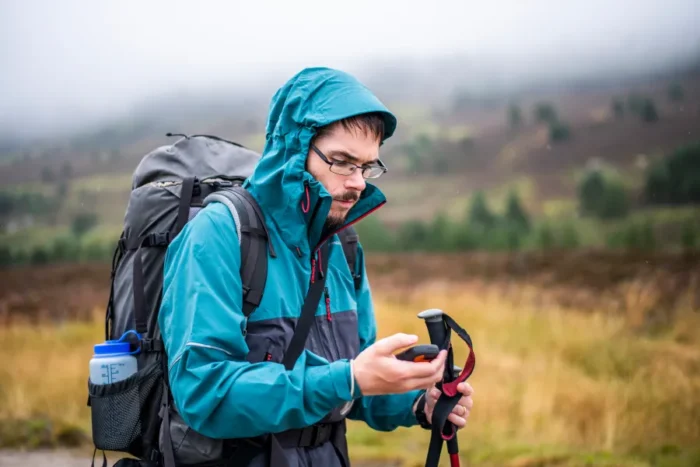
It is surprisingly easy to get lost, even on trails you thought were well-marked. Fallen branches hide signs, snow covers markers, and sometimes a faint track disappears into the grass. That is when your navigation gear matters.
- Map and Compass: Unaffected by batteries, always reliable.
- GPS device: Accurate, but carry spare batteries.
- Offline phone apps: Convenient but not trustworthy alone.
A smart hiker layers these tools. Technology is great, but being able to glance at a paper map and orient yourself with a compass gives a level of independence no gadget matches.
3. First Aid: Be Ready for Small Problems
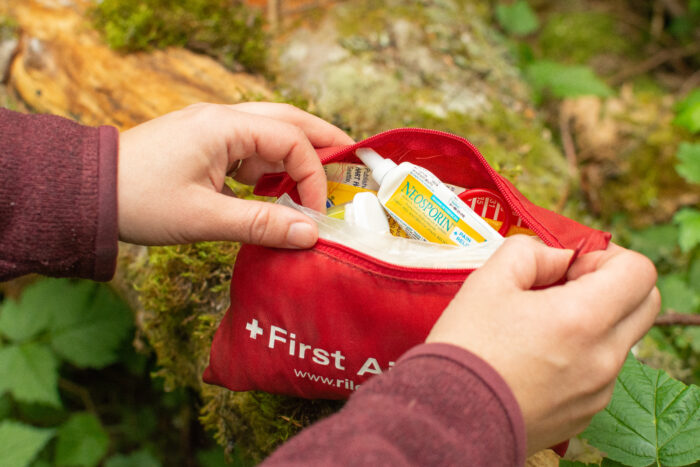
Blisters, scrapes, and insect stings are almost guaranteed when you spend hours on the trail. What separates a small setback from a hike-ending issue is how quickly you can respond. A mini first aid kit is the simplest, most effective solution. It is light, compact, and easy to personalize based on the terrain and your own health needs.
At the very least, pack:
- Blister care: moleskin patches, blister pads, or hydrocolloid bandages to stop friction before it worsens.
- Basic wound care: antiseptic wipes, adhesive bandages, and a small roll of medical tape for cuts and scrapes.
- Pain and allergy relief: tablets for headaches, muscle soreness, or mild allergic reactions.
- Tweezers and safety pins: useful for removing splinters, ticks, or thorns.
For longer or more remote hikes, you can expand your kit with a small elastic bandage for sprains, burn gel, and rehydration salts. The goal isn’t to bring an entire pharmacy but to have enough supplies to stabilize yourself until you return to the trailhead or seek professional help.
4. Hydration and Water Safety
Water weighs a lot, but running out of it is the fastest way to ruin a hike. Plan to carry at least two liters, ideally in a hydration bladder that lets you sip without stopping.
Beyond that, you need a method to treat water from streams or lakes.
- Purification tablets: Compact and lightweight.
- Portable filters: Great for groups or longer trips.
- UV purifiers: Fast and effective with clear water.
A good rule: never assume natural water is safe. Even crystal-clear mountain streams may carry bacteria or parasites invisible to the eye.
5. Clothing: The Layering System
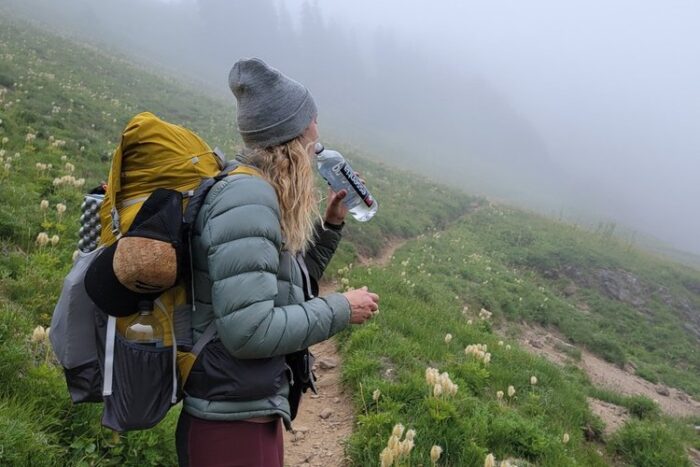
A sudden change in weather can turn a pleasant trail into a test of endurance. The layering method keeps you prepared:
- Base layer – wicks moisture away from your skin.
- Mid layer – traps warmth (think fleece or down).
- Outer shell – blocks wind and rain.
Wool and synthetics perform far better than cotton, which holds water and increases the risk of hypothermia. Add a lightweight hat and gloves — small items that make a big difference at higher elevations.
6. Footwear: Protecting Your Foundation
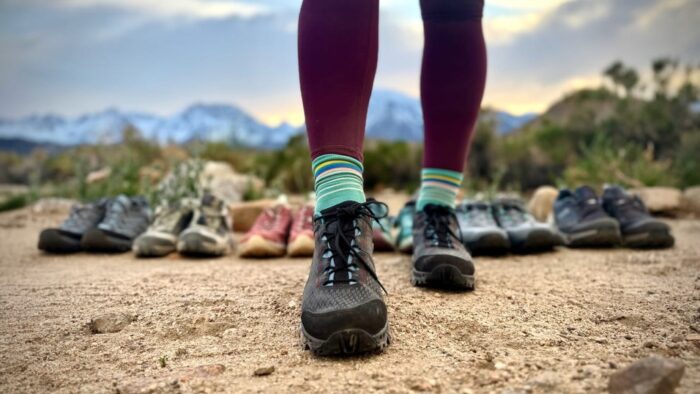
Ask any seasoned hiker: bad shoes can end a trip faster than anything else. Boots or trail shoes should match your terrain.
For rocky climbs or backpacking with heavy loads, high-ankle boots give stability. On lighter trails, breathable trail shoes offer flexibility and speed. The fit is what counts most — test them with hiking socks, and always break them in before a long trip.
A small trick: carry a spare pair of dry socks. They weigh almost nothing but can lift morale in wet conditions.
7. Trail Fuel: Food That Works
Hiking burns calories fast. You want food that is light, energy-rich, and easy to eat on the move.
Good trail snacks include:
- Nuts and seeds for long-lasting energy.
- Jerky or protein bars for muscle recovery.
- Dried fruit for quick sugar when energy dips.
For overnight hikes, pack dehydrated meals and a small stove. Hot food does more than refuel – it keeps spirits high after a long day.
8. Light and Visibility
If you’ve ever tried to pack up camp in the dark, you know the value of a good headlamp. Unlike handheld flashlights, headlamps free your hands for climbing, cooking, or checking maps.
Rechargeable ones paired with a small power bank are convenient, but carry spare batteries just in case. Adding reflective strips or glow sticks can also make you visible if you ever need to signal for help.
9. Tools and Emergency Gear
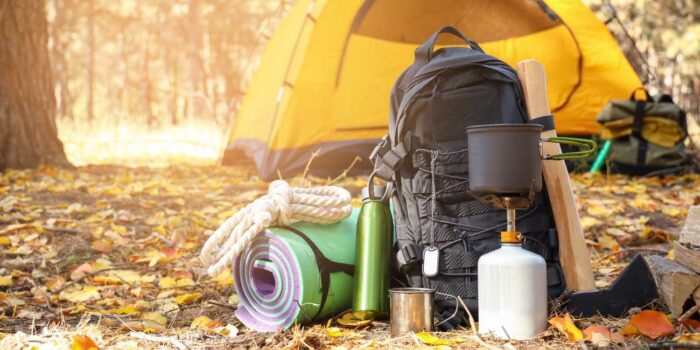
Some items feel optional until the moment they save you. A compact multi-tool can repair straps, cut rope, or handle unexpected problems. Fire-starting gear — lighter, waterproof matches, and tinder — belongs in every pack.
An emergency blanket weighs almost nothing but can trap body heat in a survival situation. A whistle is equally underrated, since sound carries farther than your voice if you need to call attention.
10. Shelter and Rain Protection
You don’t always need a tent for a day hike, but some form of shelter is smart insurance. A lightweight tarp or bivy sack can shield you from wind and rain. Even a simple rain cover for your backpack prevents clothes and food from becoming uselessly wet.
The outdoors has a way of humbling even the most confident hikers. Packing for “what if” scenarios is not paranoia; it is part of being a responsible adventurer.
Wrapping It All Together
Packing isn’t about throwing gear into a bag. It’s about being deliberate: carrying enough to cover emergencies and weather shifts, but not so much that your load slows you down. Essentials like navigation, water treatment, and a first aid kit form the backbone, while items like lighting, tools, and shelter provide security when the unexpected happens.
The beauty of hiking lies in how prepared you feel. When you know you have the essentials, you can stop worrying and focus on the trail, the views, and the experience itself.

